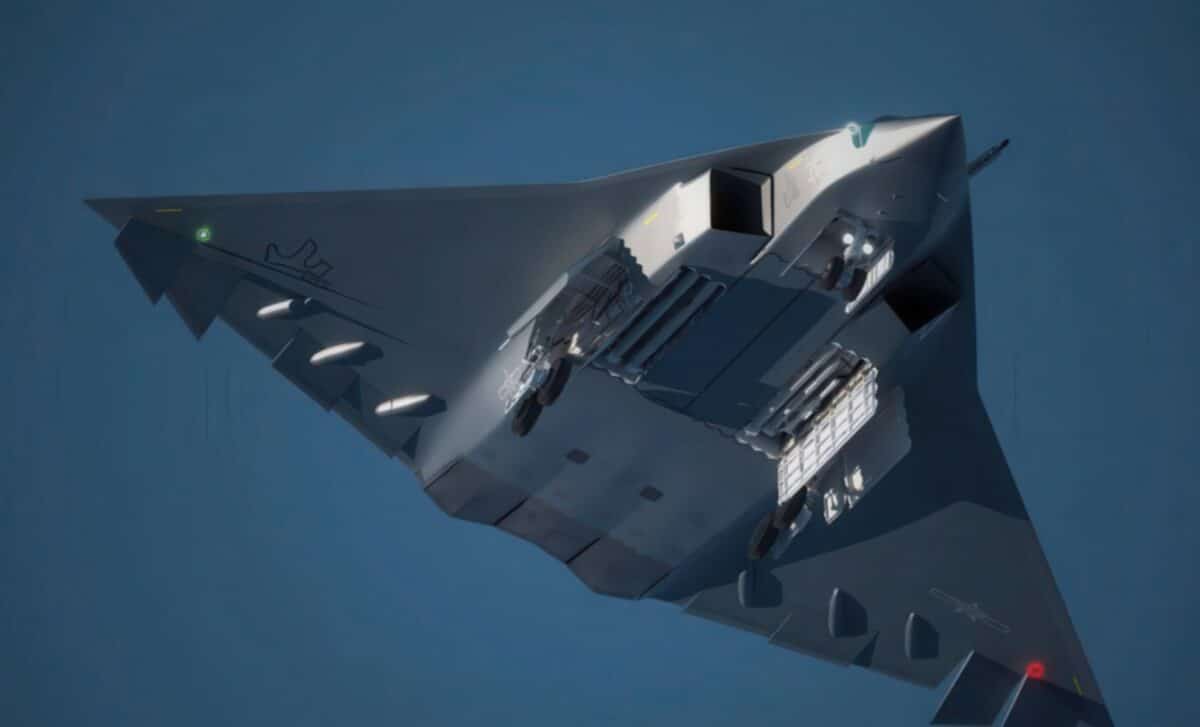A mysterious image of a potential new Chinese stealth aircraft, the J-36, has taken the defense community by storm. The photograph, though unverified, has captured significant attention, leading to speculation that this could mark a major advancement in China’s military aviation.
As the image circulates online, experts are closely analyzing the aircraft’s design and specifications. If genuine, the J-36 could represent a new class of multi-role aircraft that blends features of stealth fighters, bombers, and drones. This development would be a part of China’s broader strategy to modernize its military capabilities, especially in the face of growing competition with the United States.
States Ready to Arm Iran? Russia Warns of a Global Nuclear Nightmare Ahead
A Design That Stands Out
As mentioned in Armées, the J-36 appears to be a larger aircraft compared to traditional stealth fighters, such as China’s J-20. According to reports, the aircraft has an impressive length of approximately 23 meters, which surpasses the size of many other stealth jets. Its triangular shape and diamond-like pattern suggest a design more akin to a tactical bomber than a typical fighter. Notably, the absence of a tailplane adds to this perception.
The J-36 is also equipped with three internal weapon bays beneath its fuselage—one large central bay and two smaller ones on either side. This setup would allow the aircraft to carry a variety of weapons, including compact tactical missiles and long-range cruise missiles. The cockpit configuration, which seats two crew members side by side, is another departure from traditional stealth fighter designs. This suggests a role for a dedicated weapons officer, enhancing coordination between the pilot and the crew.
Unconventional Power and Stealth Features
The J-36 is distinct in its use of three engines. Two air intakes are located under the fuselage, with a third engine positioned at the rear of the aircraft. This engine configuration is uncommon in modern military aviation, likely offering significant power and increased performance.
Stealth remains a central focus of the J-36’s design. According to the available image, the aircraft is equipped with advanced sensors concealed under a gold-colored coating on its nose, which is likely designed to house detection and tracking systems. Furthermore, the shape of the air intakes and fuselage has been optimized to minimize radar signatures, making the aircraft harder to detect.
Geopolitical Implications
The J-36’s development and potential capabilities come at a time of heightened geopolitical tensions. This stealth aircraft is part of a broader Chinese effort to modernize its military, including the development of next-generation systems such as drones. According to sources, the J-36 is expected to be part of China’s “sixth-generation” aircraft projects, alongside other developments like the J-XDS and J-50.
The aircraft’s viral spread comes at a time when the U.S. is preparing to unveil its own next-generation fighter, the F-47. Experts suggest that the timing may be strategic, with the image of the J-36 serving to emphasize China’s growing military capabilities. Some observers view this as a method of influencing defense budgets, particularly in the context of increasing reliance on Chinese technology in global security matters.








